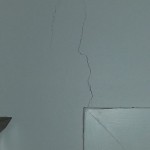Measuring Hints for Blinds fitted to the Wall or Window Frame
There are many types of blinds available, so it is important to know your main reasons for wanting a blind in the first place, as some blinds may be unsuitable for your needs. To save costly errors take note of our hints below before you start.
How Square is your window?
Fitting your blind to the wall or architrave is a great way to hide windows that may not be perfectly square. A ‘face fitted’ blind is always made wider and longer than the window opening and is installed straight and level – hiding imperfections in your window.
Add Height to your Window
You can give the illusion of height by installing the blind well above your window – in some cases 30cm above your window, or even under your cornice. The blind may never be pulled up all the way, but it can add presence to your room or restore a sense of proportion.
How far above the window do I install my blind?
Each type of blind is different and takes up a varying amount of space when in the ‘fully up’ position.
For example, Roller Blinds roll up into a very small space and Roman Blinds lift by stacking into deep horizontal pleats. Consider allowing for this by installing your Roman Blind higher to maximise the amount of light entering your room.
What is my wall made from?
When installing your blind it is important to obtain a secure fixing, so that the blind does not pull out of the wall when it is being operated. Take note of what your walls are made of, as it may affect the fixing points for your blind.

Cracking from a Corner
Brick & Stone walls are often plastered over to obtain a flat surface for painting. It is common for cracks to occur near the corners, causing plaster to become loose and no longer adhere to the brick behind (gently rapping on the area with your knuckles will result in a hollow sound). Drilling into this may result in a large chunk of plaster falling off – regardless of how careful you are. Try making your blind a bit wider, or measure a bit higher to avoid the hollow sounding spot and ultimately prevent damage.
Gyprock. Always use good quality Gyprock wall fixings. Installed properly they will provide a secure fixing for your blind. If possible locate the timber behind the Gyprock and install into this for extra strength.
Be aware of …
One reason for fixing a blind on to the face of a wall is to intentionally hide something (for example the fittings for a roller shutter). Always be mindful of electrical cabling, or protrusions (eg. handles) that may get in the way of your blind operating properly.
It is usual for brick homes to have air bricks and often there is one either side of a window. Take care when measuring as you can’t drill into them.
How wide should I make my blind?
Know your blind – where the brackets & screws will be installed, how much gapping your blind will create and how much window it will cover in the ‘fully up’ position. Use that information to assess whether or not you need to make your blind wider to offer more privacy.
Window Size
All blinds have size limitations in width, drop or both, which may affect your choice of product and where it can be fitted. Large windows may offer a few more challenges and it may not be possible (or advisable) to manufacture your selected blind in one piece. It may end up too heavy, too wide or exceed warranty limitations. Likewise, most blinds have a minimum size to which they can be manufactured.
At Healthcare Interiors we love sharing with you hints and tips for everything from creating perfect window coverings, to addressing your clients privacy Needs and creating fit for purpose, well decorated Health Care & Aged Care spaces.
Look out for our next blog.




